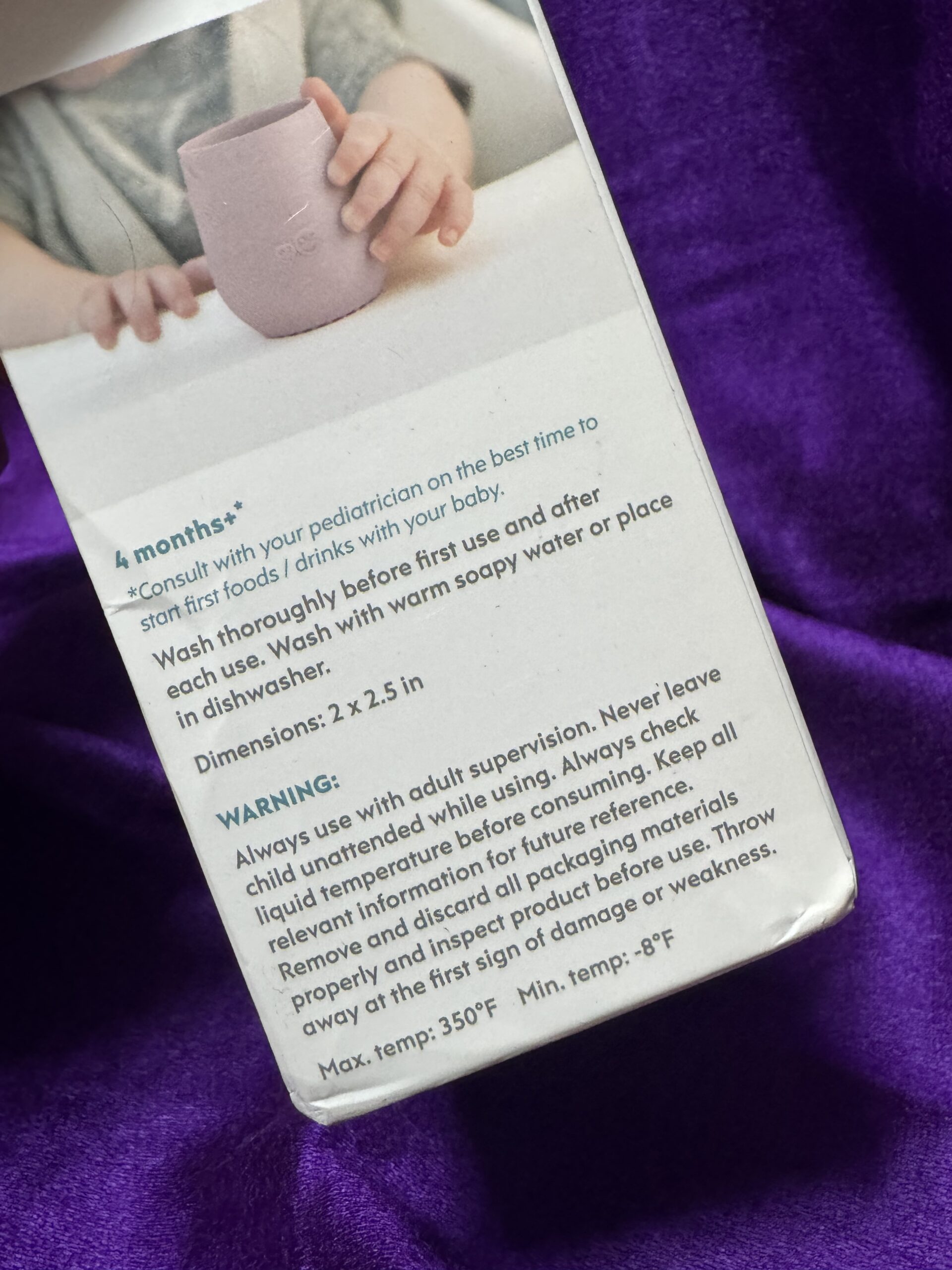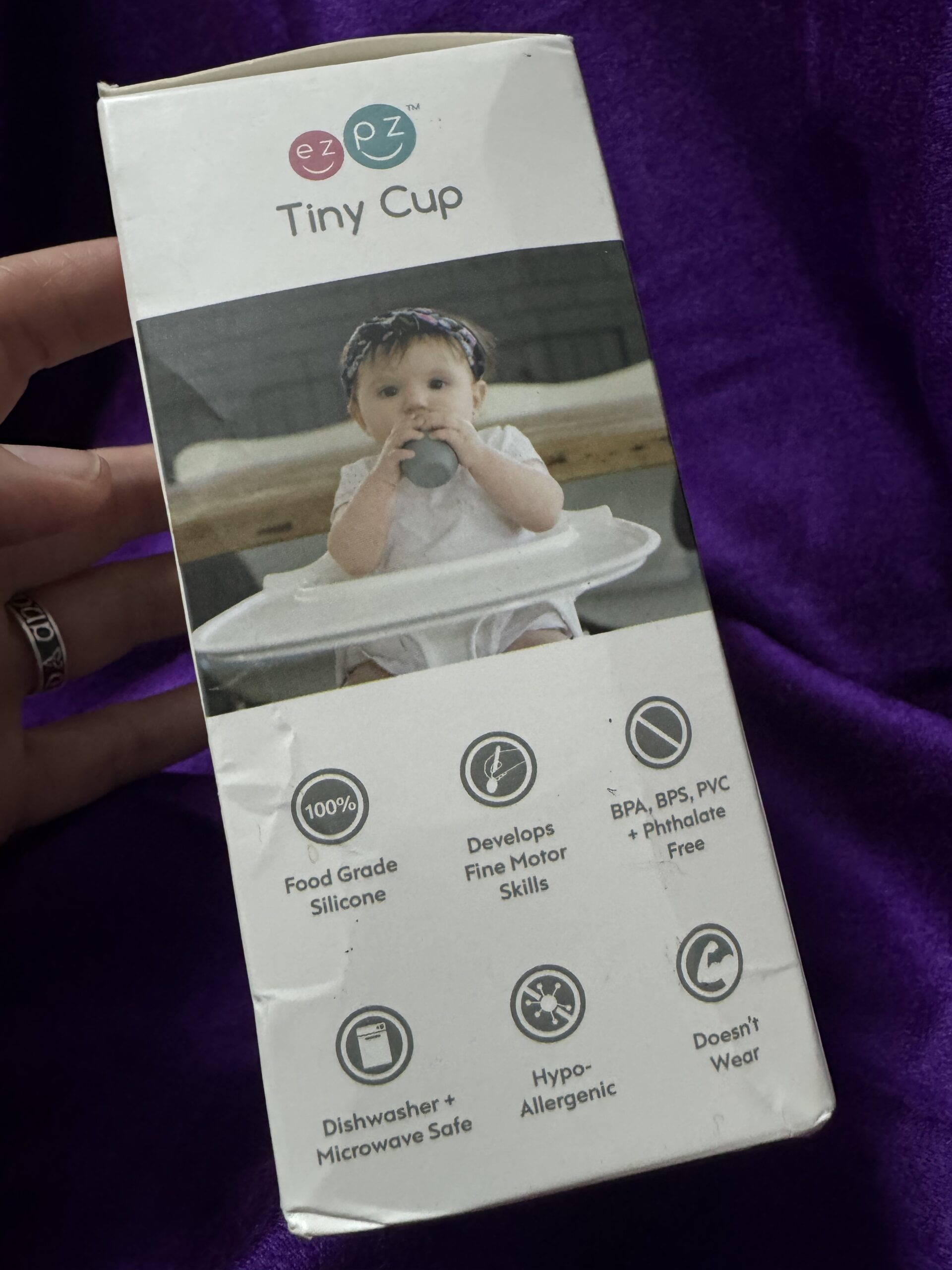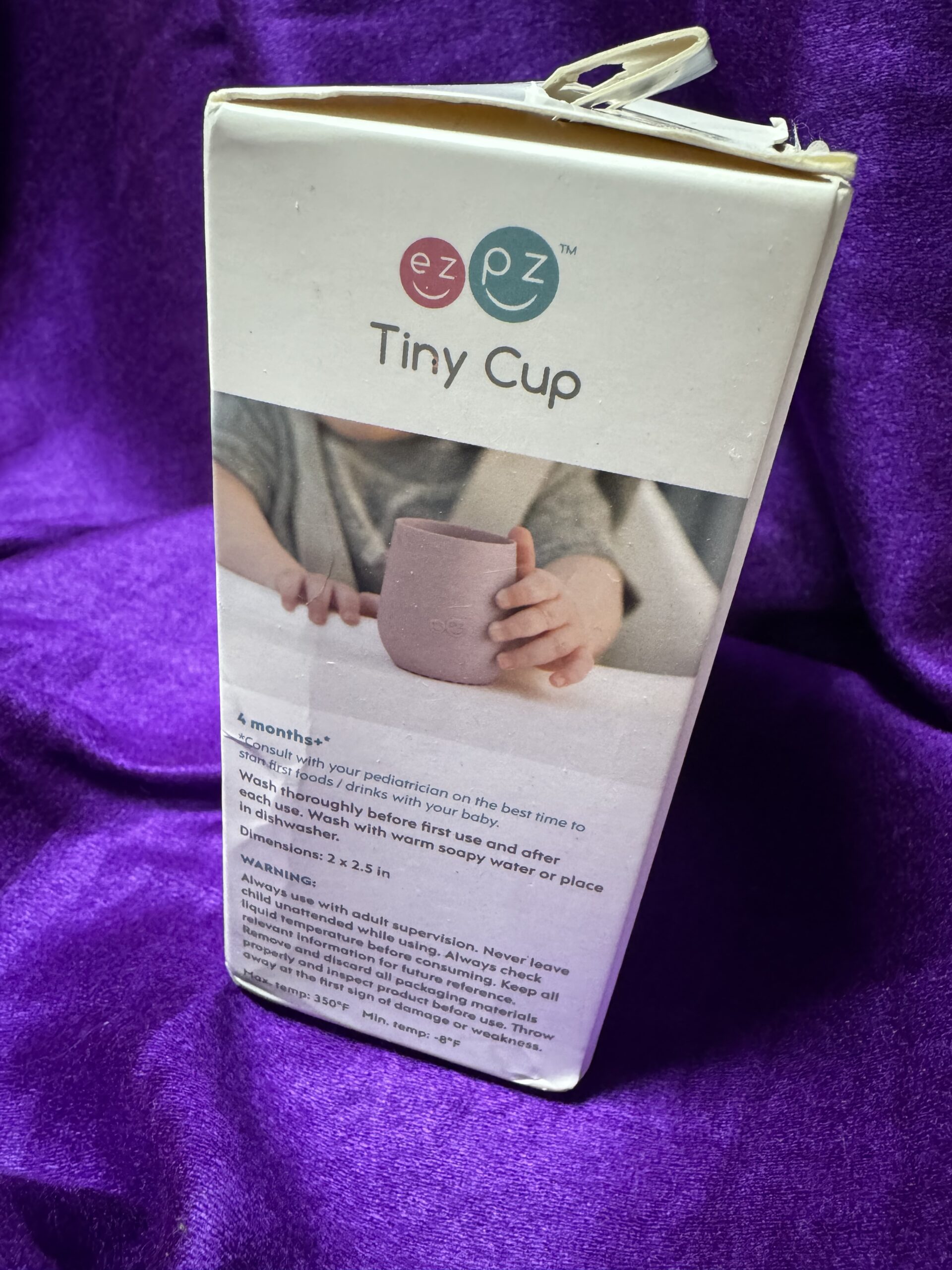XRF Test Results for EZ PZ Tiny Cup — Red Silicone Infant Training cup

For those new to the Lead Safe Mama website:
Tamara Rubin is a multiple-federal-award-winning independent advocate for childhood Lead poisoning prevention and consumer goods safety, and a documentary filmmaker. She is also a mother of Lead-poisoned children (two of her four sons were acutely Lead-poisoned in 2005).
- Tamara owns and runs Lead Safe Mama, LLC — a unique community collaborative woman-owned small business for childhood Lead poisoning prevention and consumer goods safety.
- Since 2009, Tamara has been conducting XRF testing (a scientific testing method) using the exact instrumentation employed by the U.S. Consumer Product Safety Commission to test consumer goods for toxicants (specifically heavy metals — including Lead, Cadmium, Mercury, Antimony, and Arsenic).
- Since July of 2022, the work of Lead Safe Mama, LLC has been responsible for five product recalls (FDA and CPSC).
- All test results reported on this website are science-based, accurate, and replicable.
- Items that Lead Safe Mama, LLC reports on are tested multiple times to confirm the results published (for each component tested).
- Recent notable press… There has been too much to mention already in 2024! Please check out our press page to see some of the amazing coverage of our work so far this year!
Metals highlighted below in RED are considered unsafe for humans in this application (dishware). Metals highlighted in BLUE are considered safe for humans in this application (or at the levels detected in this item).
XRF test results for the ez pz red silicone baby cup pictured
Reading #1) Side Wall of Cup
60-second reading
- Lead (Pb): non-detect
- Cadmium (Cd): 18 +/- 5 ppm [This level is considered safe by all standards]
- Arsenic (As): non-detect
- Mercury (Hg): non-detect
- Antimony (Sb): 20 +/- 10 ppm [This metal is not regulated in dishes]
- Zinc (Zn): 134 +/- 18 ppm
- Niobium (Nb): 582 +/- 19 ppm
- Indium (In): 24 +/- 6 ppm
- Platinum (Pt): 41 +/- 26 ppm
- No other metals were detected in Consumer Goods Mode.
Reading #2) Bottom of Cup (weighted)
60-Second Reading
- Lead (Pb): non-detect
- Cadmium (Cd): 19 +/- 4 ppm [This level is considered safe by all standards]
- Arsenic (As): non-detect
- Mercury (Hg): non-detect
- Antimony (Sb): non-detect
- Zinc (Zn): 112 +/- 16 ppm
- Niobium (Nb): 387 +/- 16 ppm
- Indium (In): 20 +/- 6 ppm
- No other metals were detected in Consumer Goods Mode.
Reading #3) Curved Side of Bottom of Cup
60-Second Reading
- Lead (Pb): non-detect
- Cadmium (Cd): 14 +/- 4 ppm [This level is considered safe by all standards]
- Arsenic (As): non-detect
- Mercury (Hg): non-detect
- Antimony (Sb): non-detect
- Zinc (Zn): 89 +/- 14 ppm
- Niobium (Nb): 331 +/- 15 ppm
- Indium (In): 13 +/- 5 ppm
- No other metals were detected in Consumer Goods Mode.
Some additional reading that may be of interest:
- Can I test my own dishes myself at home?
- What can I test with a home test kit?
- Can I send you a dish to test?
- How to use this website to search for products you have in your home (a video)
- Safer (Lead-free) choices for dishes and other items in your home
How much Cadmium is too much Cadmium?
There are two relevant total content standards for Cadmium: The State of Washington considers dishes unsafe for use by children if the total Cadmium content level is greater than 40 ppm. The country of Denmark considers total Cadmium content above 75 ppm unsafe. These are the strictest total content standards for Cadmium in consumer goods and this item (this children’s cup) has lower Cadmium levels than each of these standards. Said another way, this cup is safe by all current standards for consumer goods.
However…
Cadmium is a known carcinogen and it is the position of Lead Safe Mama, LLC that these standards are not strict enough in this particular application. We should set standards that permit ZERO allowable Cadmium, in children’s feeding products especially. In the absence of stricter standards, we encourage parents to take the following actions:
- Only use food-contact silicone products for cold food or dry food (never for hot food, or for cooking)
- Limit the use of silicone products (which seem to be contaminated with traces of Cadmium across the board) to absolutely necessary applications (for example — baby bottle nipples and/or pacifiers)
- Choose non-silicone options whenever possible (try natural rubber baby bottle nipples for example)
- Choose non-silicone options for any food use applications that have readily available non-silicone choices (baking pans, etc.)
- Don’t “worry” about the situations where you must choose silicone (needing to rely on one or two silicone items in today’s world is understandable), just limit silicone choices when feeding babies in particular
As always, thank you for reading and for sharing articles from LeadSafeMama.com. Please let me know if you have any questions and I will do my best to answer them personally as soon as I have a moment.
Tamara Rubin
Owner — Lead Safe Mama, LLC
#LeadSafeMama
Two Photos to Show Size
More photos of the product and packaging:

Never Miss an Important Article Again!
Join our Email List


















Do you think the color of the cup would change the results?
I have it in grey and used it occasionally.
I have test results for two other colors I will be publishing. Stand by (subscribe to the newsletter!)
t
Hi Tamara, have these results already been published in the newsletter? Just signed up
Curious about other colors as well. We have green and blue!
Have you also tested the forks and plates? I would love to know as we use those also.
Omg … these are all the rage these days . So does that mean one should avoid using this ?
Have you tested the olababy straw cup ?